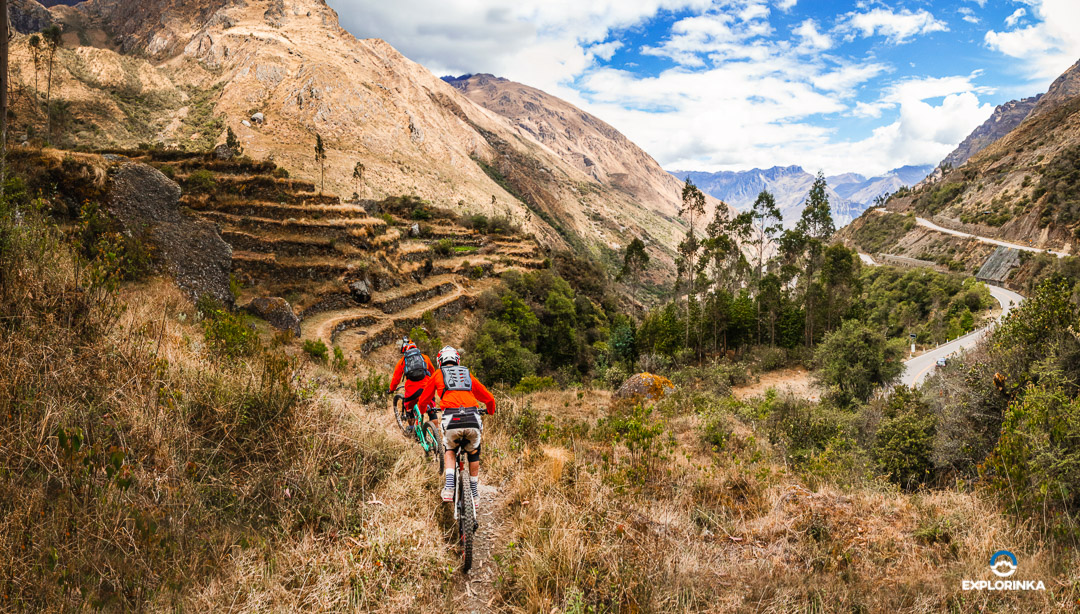It all starts on a mountain at 4200 meters above sea level with temperatures of approximately 10 degrees Celsius in the rainy season. Sometimes the temperature can drop to 0 degrees causing snow, depending on the season.
The Inca Avallanche Trail is a complete circuit to enjoy downhill. From the beginning it offers high speed sections, with wet terrain, loose rocks, mud, subtly giving it a touch of difficulty.
As you descend, you will find more vegetation, the temperature will rise a little and you will ride sections that demand more technique in your style. The verticals and curves will be frequent on the trail, slightly tight curves lacking cant and verticals with a lot of mud and considerable inclines. But don't worry, it's not difficult to ride as long as you have some intermediate experience.
The gaps and drops are also present, there are some gaps with a distance of 2 meters between the ramp and the receiver, and others of 5 to 6 meters of pit, this being the largest. The drops are not very high, they will have approximately a height of 2 meters maximum, with a good inclination of the receiver, allowing you a good landing at the moment of jumping.
The trail has a distance of 12.6km starting at Abra Malaga and ending in the town of Piri.
The level you should have is advanced intermediate. Consider the obstacles you will be riding over such as mud, rocks and jumps. On average the level of the circuit is a black diamond.
Being a mountain at 4200 meters above sea level the weather is almost unpredictable, it may be raining or you may have a little sunshine. The normal is that it does not rain in the morning hours until noon. This applies in the months of November until the end of March. The rest of the months are considered dry days, but there is always a high probability of precipitation. Don't forget to bring a rain jacket if you are going to ride the Inca Avalanche.
The Inca Avalanche is a singletrack trail.
If you are in Cusco city the first thing you should do is to protect your bicycle well because you will take it in a car not conditioned for bicycles.
You need to locate the bus terminal that takes you to the city of Quillabamba located in the district of Santiago in Zarzuela street. You will buy a ticket with end point at Abra Malaga. Once your bike is installed in the cargo hold you will travel for approximately 3 hours until you reach your destination. When you arrive at the starting point, locate the trailhead next to a house, or you can ask the locals. Now you can start your adventure through the Inkavalanche.

















